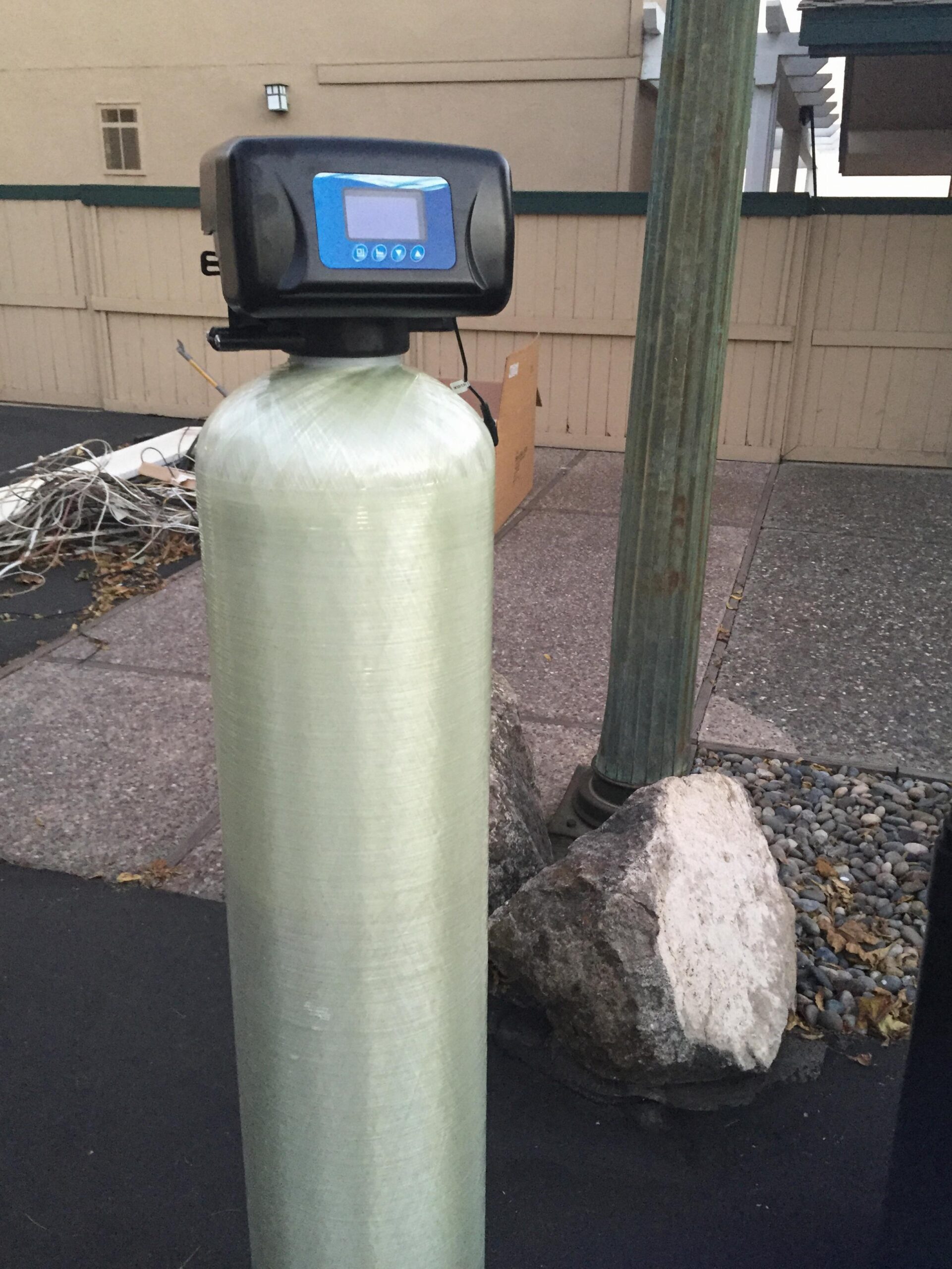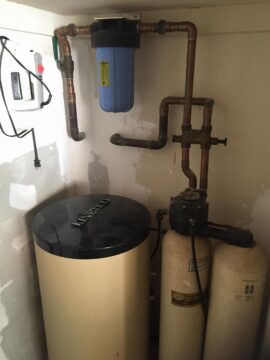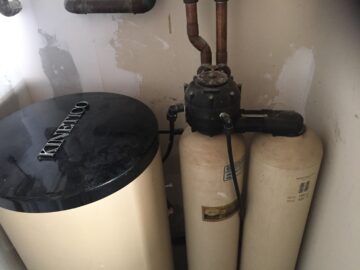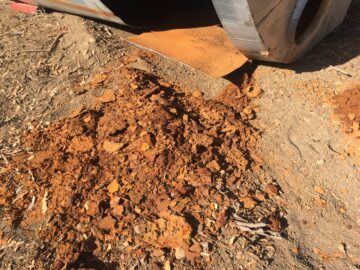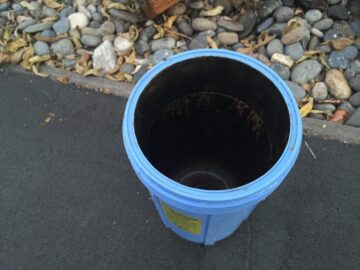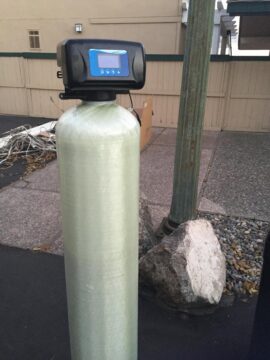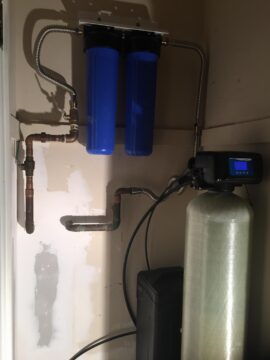Because our water comes from a hole in the ground, it is very hard–specifically, our calcium hardness rating on regular pool water tests puts us at 575 ppm. While the water coming directly out of the well tastes just fine, that amount of calcium is bad for the plumbing and makes soaps and shampoos far less sudsy and thus less effective, so we have to soften the water.
The water softener unit in use when we bought the house had been installed sometime in the mid-1980s. As you can see in the pics below, it was not the most technologically-advanced system by today’s standards. The tank on the left was the salt tank and the actual molecular replacement stuff happened in the two cylinders on the right. For those unfamiliar with how water-softening works, the smaller tanks are filled with resin (aka polystyrene beads). Pushing salt water through the small tanks causes positive sodium bits to bond to the negative beads. As our virginal well water flows through the resin, the sodium swaps places with calcium since calcium has a bigger charge. (The two major varieties of water softeners use salt or potassium.)
The salt tank is needed because eventually, calcium replaces all of the sodium in the resin and the water isn’t being treated. The weird dial-like thing on top of the left resin tank is a mechanical flow-based setup to control the resin recharges. After a certain amount of water passed through the resin tanks, a nice brine solution would be washed through them to recharge the resin. This causes the calcium in the resin to give way, and be recharged with sodium. After regeneration, the unit flushes the remaining brine and all of the calcium down the drain–in our case, out to the septic tank. With the old setup, measuring usage and accurately tracking when recharging occurred was not possible.
The pipe on the left is the incoming water and the blue thing hanging there was a sediment filter. One thing to note is the green handle that looks like a shutoff valve was NOT a shutoff valve. The poor guys who came out to do the install thought they had turned off the water and started dismantling things, only to find themselves causing a small flood. We had to go behind the garage to the main cutoff to stop the flow. (And that iron was just one of the very random things left in the house by the POs.)
As mentioned in the previous water post, there was a lot of sediment in the well tank–mainly rust, since the old tank was made of steel. Pictured is what spilled out of the old tank. The sediment filter–as a result of that and the POs not doing any preventative maintenance–was…well, very used. Also, there was mold growing in the salt tank.
This was all back in August, and since then we’ve enjoyed our nice new water softener, with two sediment filters and a LCD display/control that monitors itself and tells us what it’s doing. We also have a proper shutoff valve; you can see it just to the left of the sediment filters.
The new setup means we can shower, wash dishes and clothes, etc. effectively, but it also means the water coming out of our taps tastes a bit salty. Not salty enough to gargle and remedy a sore throat; more as if you’d spilled a bit of salt accidentally into your water glass when you shoot the shaker on to your food. This means for drinking water, there’s one more step in the process.

